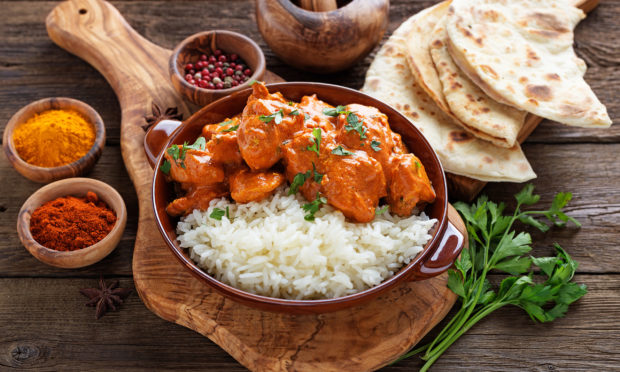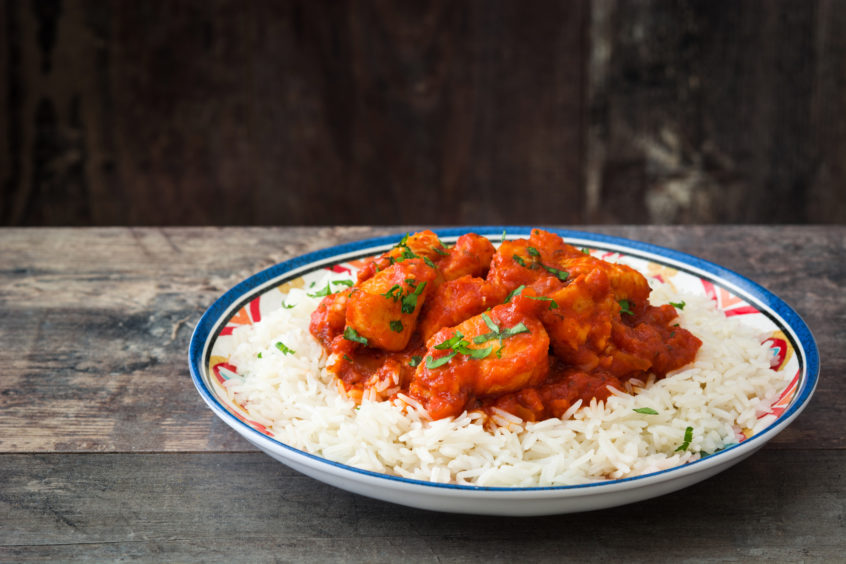Chicken tikka masala is one of the most popular Indian restaurant and takeaway dishes around, but Brian Stormont found that it’s believed to have been invented in Glasgow.
Ask people what their favourite Indian meal is and a huge number will reply chicken tikka masala.
Although it remains popular today, the story of how chicken marinated in spices and cooked in a creamy tomato sauce originated is a fantastic one – a tale which suggests it was invented in Glasgow.
The story tells of a customer who visited a curry house in the 1970s and ordered chicken tikka. Having sent the dish back to the kitchen, complaining that it was too dry, the chef is said to have added a tin of tomato soup and a few spices to the dish – and the customer loved it!
He brought his friends along to try the new invention and it proved so popular that the restaurant decided to put it on the menu.
Others say that chicken tikka masala originated in the south Asian community in England, while it is also claimed that its roots are firmly in the Indian subcontinent with its origins the Punjab.
“A true British national dish”
One thing is for sure, it is an extremely tasty dish loved by millions in the UK, so much so that in 2001 the then Foreign Secretary Robin Cook said that chicken tikka masala celebrated the country’s multiculturalism, commenting: “Chicken tikka masala is now a true British national dish, not only because it is the most popular, but because it is a perfect illustration of the way Britain absorbs and adapts external influences.
“Chicken tikka is an Indian dish. The masala sauce was added to satisfy the desire of British people to have their meat served in gravy.”
And in 2009, Labour MP Mohammad Sarwar put forth an Early Day Motion in the House of Commons requesting that Parliament recognise Glasgow as the home of chicken tikka masala to support a campaign for EU Protected Geographical Status for the dish, such as other regionally designated foods like Arbroath Smokies.
Mr Sarwar’s motion, however, failed to make it to the debating chamber.
For a long time, chicken tikka masala held the coveted position of most popular curry dish in the UK, although that title is currently held by chicken jalfrezi.
Why not try making this popular Indian meal at home?
Chicken tikka masala
(Serves 4)
Ingredients
- 4 boneless chicken breasts, cubed
- 6 tbsp tikka paste
- 120ml natural yoghurt
- 1 tbsp oil
- 1 onion, chopped
- 1 garlic clove, finely chopped or grated
- 1 green chilli, finely chopped with seeds removed
- 1 thumb sized piece of ginger, grated
- 1 tbsp tomato puree
- 250ml water
- 1 tbsp lemon juice
- Fresh coriander
Method
- In a large bowl mix the chicken with half of the tikka paste and half the yoghurt and marinate for at least 30 minutes. Overnight is best if you can.
- Heat the oil in a large pan or large frying pan and fry the onion, garlic, chilli and ginger for about 5-6 minutes, then add the remaining tikka paste and fry for another few minutes.
- Stir in the tomato puree and water, bring to the boil then reduce the heat and simmer for a few minutes.
- While your sauce is simmering, heat a grill or griddle pan. Thread your pieces of chicken on to metal or wooden skewers that have been soaked in water to avoid burning. Cook the chicken pieces for about 15 minutes.
- Blitz your sauce in a food processor until smooth and return to the pan.
- Add the remaining yoghurt, lemon juice and your cooked tikka chicken to the pan and simmer for 5 minutes.
Serve with boiled rice, basmati rice or naan bread.

